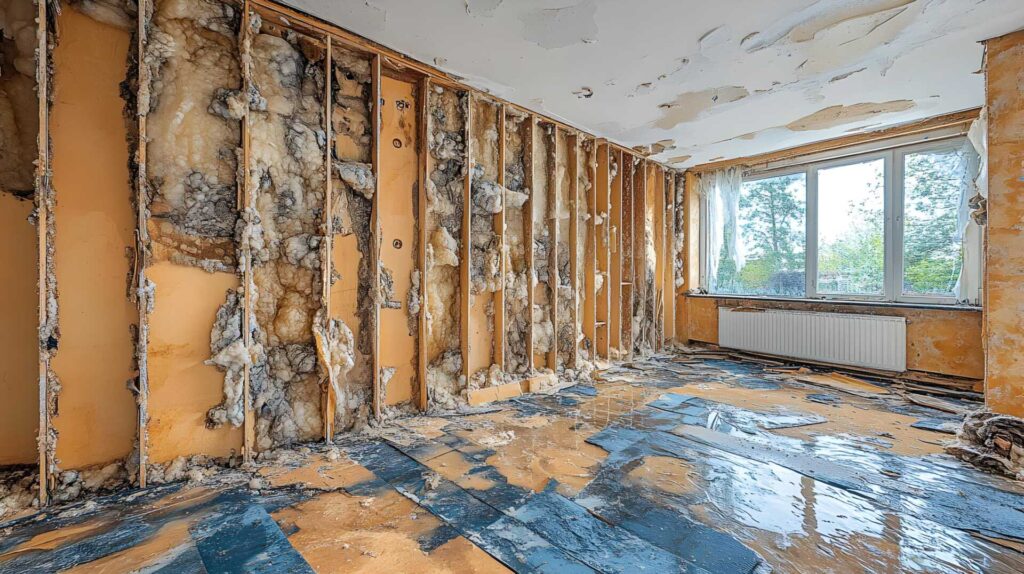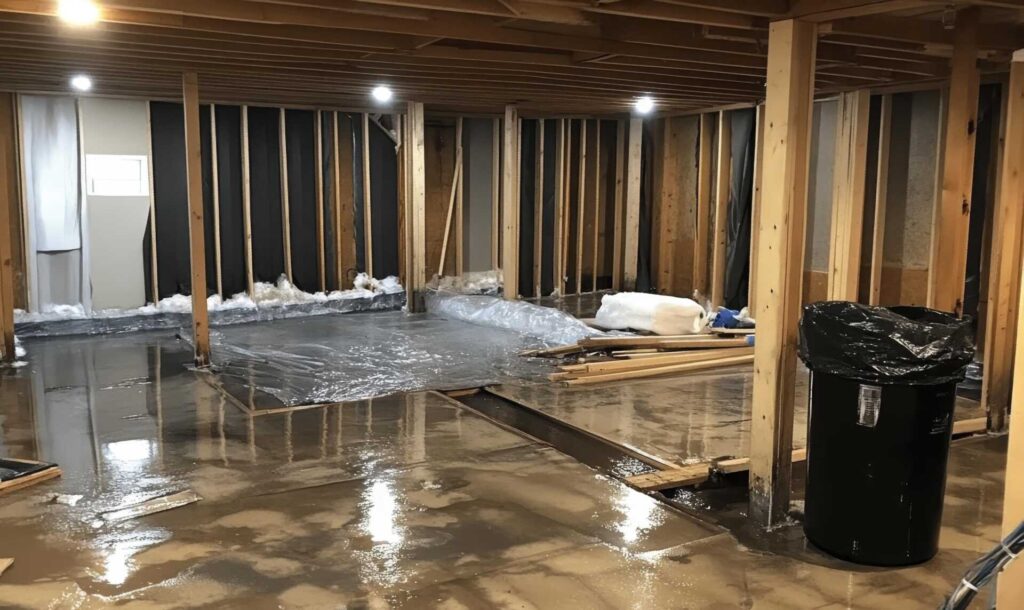Contents
Are you struggling to find a hidden drain in your home? Don’t worry, we’ve got you covered!
In this article, we will guide you through the process of locating those elusive drains.
From common hiding spots to visual inspection techniques, we’ll provide you with the knowledge and tools you need.
Whether you’re a DIY enthusiast or simply want to understand the process, we’ve got the answers to help you serve your home better.
Key Takeaways
- Common hiding spots for hidden drains include underneath sinks, behind washing machines and dryers, in the basement, and outside near the foundation or in the yard.
- Visual inspection techniques for hidden drains include examining the surrounding area for unusual openings or covers, looking for raised sections or different textures on the floor or wall, inspecting underneath objects, and using your sense of smell and observing for discolored or wet patches.
- Household tools such as flashlights, plungers, drain snakes, and screwdrivers can be used to locate and address hidden drain issues.
- Seeking professional help for hidden drains is beneficial as professionals have expertise, access to specialized equipment and technology, knowledge of regulations and best practices, and the ability to diagnose and address underlying issues effectively.
Common Hiding Spots
To locate a hidden drain, start by checking the most common hiding spots in your home. When it comes to serving others, it’s important to be knowledgeable and resourceful. So, let’s dive in and uncover these hidden drains together!
One common hiding spot for drains is underneath sinks. Take a peek beneath your kitchen and bathroom sinks, as well as any utility sinks you may have. Look for a small pipe leading down into the ground. This is likely where the drain is hiding.
Another spot to check is near your laundry area. Behind your washing machine, there may be a hidden drain pipe. Look for a small opening in the wall where the pipe might be located. Don’t forget to check behind the dryer as well!
If you have a basement, it’s worth exploring down there too. Check along the walls and in the corners for any signs of a hidden drain. Look for a small grate or opening in the floor that could lead to the drain.
Lastly, don’t forget to check outside your home. Many homes have drains located near the foundation or in the yard. Look for a small grate or metal cover that could be concealing the drain.
Remember to be thorough and patient when searching for hidden drains. It may take some time, but with a little persistence, you’ll be able to locate them. By following these tips, you’ll be well on your way to serving others and keeping your home’s drains in top shape. Good luck!
Visual Inspection Techniques
Now, let’s continue our exploration of hidden drains by utilizing visual inspection techniques.
When it comes to finding a hidden drain, your eyes can be your best tool. Visual inspection techniques involve carefully examining the surrounding area to locate any signs of a drain. Start by looking for any unusual or unexpected openings or covers on the ground or walls. These could be indicators of hidden drains. Pay attention to any discolored or wet patches as well, as they could be evidence of a drain nearby.
Take a close look at the layout of the room or area you suspect the drain might be hiding. Look for any patterns or irregularities that could suggest the presence of a hidden drain. For example, if you notice a section of the floor or wall that’s slightly raised or different in texture, it could be a disguised drain. Also, keep an eye out for any objects that seem out of place or unnecessary. Sometimes, drains can be covered or hidden by furniture, rugs, or other items. Move these objects aside and inspect the area underneath to see if there’s a drain hidden there.
Don’t forget to use your sense of smell as well. If there’s a hidden drain, there might be a distinct odor associated with it. Be on the lookout for any unusual smells, especially in areas where water is commonly used or drains are typically found. If you detect a strong, unpleasant odor, it could be a clue that there’s a hidden drain nearby.
Utilizing Household Tools
You can easily locate a hidden drain by frequently using common household tools. These tools are readily available and can be used to uncover the location of a hidden drain in your home. By utilizing these tools, you will be able to identify the drain and address any issues that may arise.
Here is a table showcasing some common household tools that can be used to locate a hidden drain:
| Tool | Description | Purpose |
|---|---|---|
| Flashlight | Portable light source | Illuminate dark areas |
| Plunger | Rubber suction cup on a handle | Clear clogs in drains |
| Drain Snake | Flexible wire with a handle | Remove debris from clogged drains |
| Screwdriver | Tool with a flat or Phillips head | Remove drain covers for inspection or repair |
Using a flashlight, you can inspect dark areas such as under sinks or in crawl spaces to locate hidden drains. A plunger can help clear any clogs that may be obstructing the drain and causing issues. For more stubborn clogs, a drain snake can be used to remove debris. And finally, a screwdriver can be used to remove drain covers for closer inspection or repair.
Using Specialized Drain Locating Equipment
To accurately locate hidden drains, specialized drain locating equipment can be used to enhance the efficiency and precision of the process. When faced with the challenge of finding a hidden drain, these specialized tools can make your task much easier. Here are some reasons why using specialized drain locating equipment is beneficial:
-
Increased accuracy: Specialized drain locating equipment is designed to accurately pinpoint the exact location of hidden drains. This helps you avoid unnecessary digging or damage to your property.
-
Time-saving: With the help of these tools, you can save a significant amount of time in locating hidden drains. Instead of relying on trial and error methods, the equipment provides quick and precise results.
-
Non-invasive: Some specialized drain locating equipment uses advanced technology, such as ground-penetrating radar or sonar, to detect hidden drains without the need for excavation. This means minimal disruption to your property and less mess to clean up afterward.
-
Versatility: Specialized drain locating equipment can be used in various settings, whether it’s residential, commercial, or industrial. It’s designed to adapt to different types of drains and can be utilized by professionals and DIY enthusiasts alike.
-
Cost-effective: By using specialized drain locating equipment, you can save money by avoiding unnecessary repairs or replacements. The equipment allows you to locate the drain accurately, ensuring that any necessary maintenance or repair work is done only where it’s needed.
Seeking Professional Help
If you’re facing difficulties locating a hidden drain, it may be time to seek professional help. Sometimes, the task at hand requires expertise and experience that only a professional can provide. By reaching out to a professional, you can save yourself time, effort, and potential damage to your property. Here are a few reasons why seeking professional help is a wise decision:
| Reasons to Seek Professional Help | Benefits of Professional Help |
|---|---|
| Expertise and experience in drain locating | Accurate and efficient drain detection |
| Access to specialized equipment and technology | Comprehensive inspection and assessment |
| Knowledge of local regulations and best practices | Compliance with legal requirements and standards |
| Ability to diagnose and address underlying issues | Effective solutions for long-term drain maintenance |
| Professional guidance and advice | Peace of mind and assurance in resolving the problem |
By choosing to work with a professional, you can tap into their knowledge and resources to resolve your hidden drain issue effectively. They have the necessary tools and technology to locate and assess the drain accurately, ensuring that all potential problem areas are identified. Moreover, professionals are well-versed in local regulations and best practices, ensuring compliance and avoiding any legal issues.
In addition to their technical expertise, professionals can diagnose and address any underlying issues that may be contributing to the hidden drain problem. This comprehensive approach not only solves the immediate issue but also helps prevent future problems.
Furthermore, seeking professional help provides you with guidance and advice tailored to your specific situation. They can advise you on the best course of action, whether it’s a repair, replacement, or preventative measures to maintain your drain system.
Conclusion
So, if you’re struggling to find a hidden drain, don’t panic. Start by checking common hiding spots and conducting a visual inspection.
If that doesn’t work, try using household tools like a flashlight or a plunger.
If all else fails, consider using specialized drain locating equipment or seeking professional help.
With a little patience and persistence, you’ll be able to locate that hidden drain and resolve any issues you may be facing.




